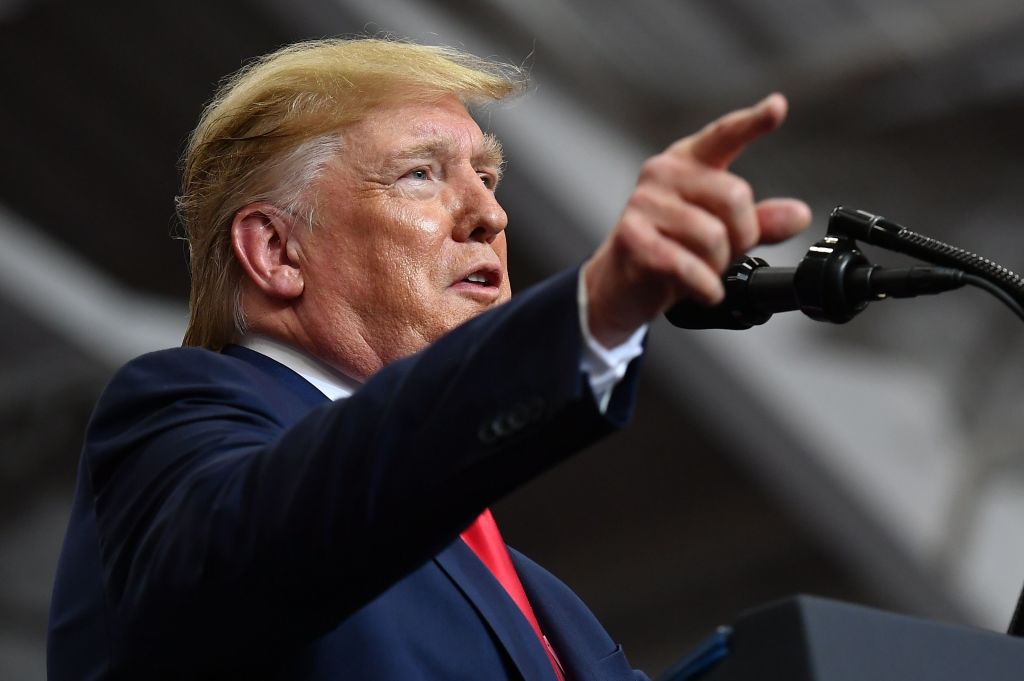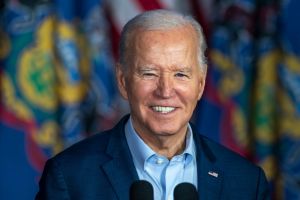It was a season of complete insanity and boredom. At least that’s how Virginia Woolf recorded the year 1932 in her diary. Her friends kept dying. Europe stared into the abyss and the abyss marched past its windows wearing brown shirts. ‘All England’, she wrote, was ‘spoiled.’
She recorded her husband Leonard, as he tended to the flowers in their Sussex garden, muttering: ‘Things have gone wrong somehow.’
For liberals today, as they did for Mrs and Mr Woolf many decades ago, things have gone wrong. There is the sheer wrongness of this president, a rodent scuttling across the boards of their White House; there is the wrongness of the internet, a tool which they thought would liberate the world, rather than activate a freewheeling style of postmodern, authoritarian political leadership.
Somewhere deep in the viscera of The New York Times building, a platoon of America’s finest political journalists have been trying to figure out how everything went so wrong.
Their answer — ‘The Twitter Presidency’ — is that the president is both slave to, and master of, a ‘frenetic life cycle of conspiracy-driven propaganda, fakery and hate.’ Trump, armed with his smartphone and a bad mood single-handedly ‘helped spread a culture of suspicion and distrust of facts into the political mainstream.’
The Times trawled through Trump’s tweets, his retweets, hashtags; all the putdowns; every meme, to bring us breaking, Pulitzer-worthy news like: ‘Mr Trump also used Twitter to attack the credibility of journalists, intelligence agencies and the judicial system.’
The report’s most damaging (and conspiratorial) insinuation is that Trump is working with legions of whack-nut conspiracy theorists, fake accounts run by Russian, Chinese, Iranian and North Korean intelligence agencies, racial supremacists and every other kind of marginal, unwashed digital fuse-lighter, to undermine the integrity of the nation’s institutions. ‘Mr Trump’, fumes the Times, ‘has retweeted at least 145 unverified accounts that have pushed conspiracy or fringe content.’
Even more nefariously, Trump gave ‘gave prominence to objectionable material and — intentionally or not — those responsible for it.’ Notice how slippery that intentionally is.
Really, the question of what Trump actually intends when he retweets unverified accounts is too important to be dismissed so glibly.
Is the president responsible for encouraging the spread conspiracy theories if he retweets a QAnon follower? Is the president a stooge of Putin if he retweets an account that turns out to be connected to Russian intelligence? And, more to the point, does the Trump administration have the same objectives as the people behind these accounts?
The Times pretends it isn’t sure what the answers to these questions are, even as it implies that the answer is yes in all three cases. ‘While it is not always clear whether his retweets are intended to endorse their authors, the president is effectively launching these accounts into the public eye.’
What does ‘launching these accounts into the public eye’ actually mean? These accounts gain a few thousand followers, they sink back into obscurity, and the Times writes about them a few months later, as if they represent the fall of the Republic and a rehearsal for the end of the world.
In the meantime Trump moves on, and tweets a meme of a dog receiving a medal and sweary videos of cage fighters. How such tweets advance the aims of the Russian government, or QAnon theorists, is unclear. It is quite bizarre that Trump tweets with truly malign unintended consequences — over 40 people died and dozens were injured in Afghanistan when Trump canceled peace talks with the Taliban in September — seem to bother the Times less than the president’s attacks on the ‘deep state’.
There is something fundamentally vaudeville about this tragicomic presidency and its chorus of media catastrophists, and a larger air of unseriousness, both in the culture and in our politics. The apocalyptic notion, pushed by the Times and all the others, that Trump and his tweets mainstreamed suspicion and fake news, is straightforwardly false. Our own season of insanity did not begin in 2016.
Distrust spreads through any society over the course of decades, not months. Considerable, growing numbers of Americans distrust organized religion, the Supreme Court, the presidency, the medical system, the criminal justice system, the banks, Congress, big business, organized labor, public schools, newspapers and television news.
As always, the trouble with such grievances is that they’re usually justified. It is only during such a broad, deep crisis of legitimacy that a wrecking ball figure like Trump could have been elected.
The invention of Twitter only accelerated the process, and gave greater scope for an anti-political, insurgent campaigner like Trump to reach his audience. If Twitter had been around in 1992 we might have ended up with a Trumpian presidency — it just would have been Pat Buchanan in the Oval Office, not Trump.
This context is less interesting to our friends at the Times than the vast conspiracy they have built out of the president’s Twitter addiction — the journalistic equivalent of the dozens of people every year who claim to see Jesus’s face in their food.
In sniffing all the breadcrumbs that are Trump’s tweets, they manage to ignore Trump’s intentions, which are never more complicated than praising himself and maiming his enemies; they ignore the latent conditions that enabled Trump to become president, which explain far more about our discord than his tweets do.



















